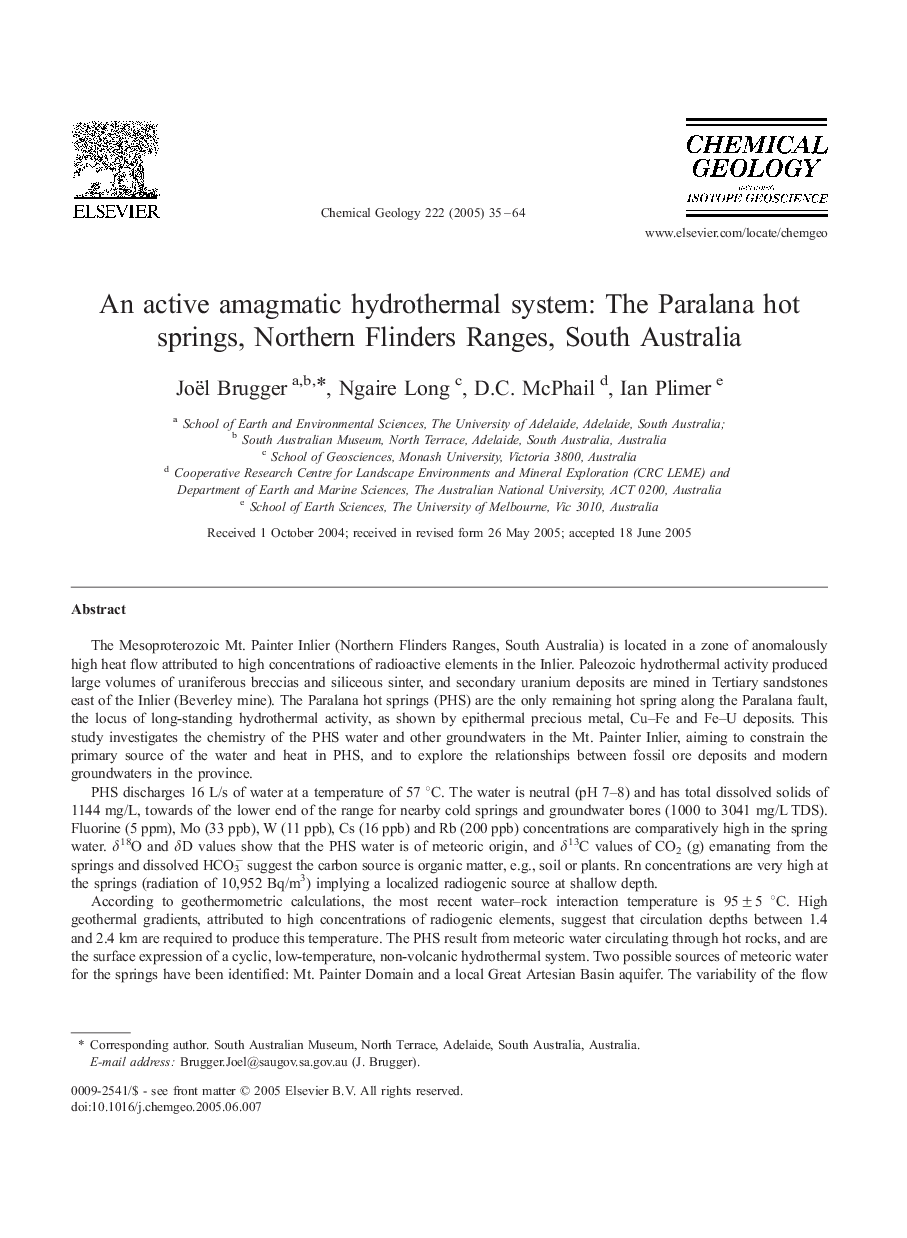| Article ID | Journal | Published Year | Pages | File Type |
|---|---|---|---|---|
| 9529171 | Chemical Geology | 2005 | 30 Pages |
Abstract
The PHS contain negligible U (0.07 ppb), but some shallow groundwaters in the basement are enriched in U (300-600 ppb). Reactive transport modelling shows that these waters could produce Beverley-style mineralisation upon reaction with reduced carbon and/or sulphides. The PHS water, on the other hand, could produce upon cooling the jasperoidal mineralisation with traces of sulphides that outcrops along the Paralana fault. Hence, the chemistry of present-day groundwater may be related to that of the paleo-water responsible for major mineralisation events in the region, although particular circumstances affecting fluid flow and fluid chemistry (e.g., climate, tectonism, or magmatism) must have been instrumental in the formation of the major deposits.
Related Topics
Physical Sciences and Engineering
Earth and Planetary Sciences
Geochemistry and Petrology
Authors
Joël Brugger, Ngaire Long, D.C. McPhail, Ian Plimer,
